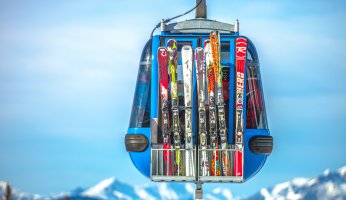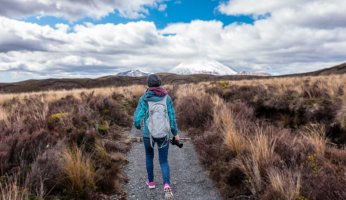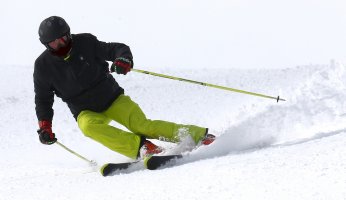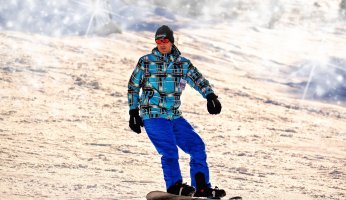Beginner’s Guide to Skiing: How to Prep
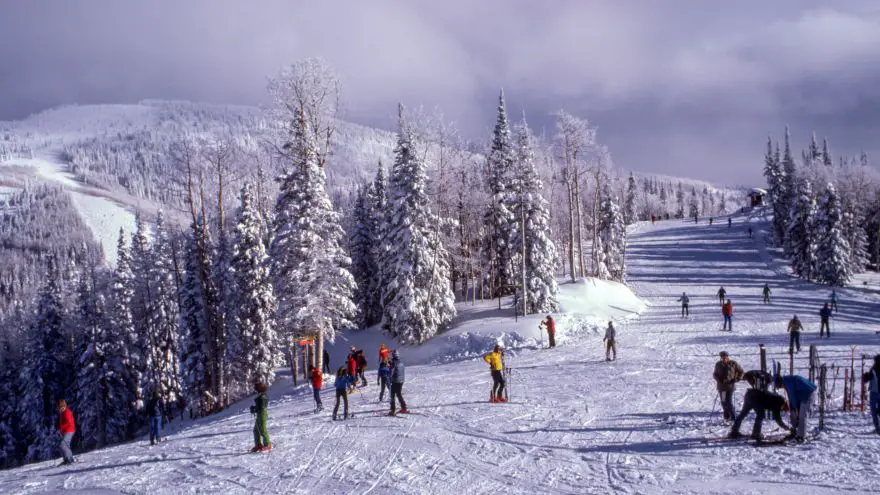 Beginner’s Guide to Skiing: How to Prep
gearweare.net
Beginner’s Guide to Skiing: How to Prep
gearweare.net
Winter holiday is all about that incredible, awesome feeling; knowing that you’re going to have a fantastic time skiing on the slopes. It’s quite an experience gliding down the slopes, enjoying the snow and the scenery. That is to say, as a first-time skier, you must have a lot of questions, like what to know before going skiing? What kind of ski gear and clothes to get? Does it get warm when skiing? How to avoid injuries, etc.?
Thus, here is a beginner’s guide to skiing to help you prepare for the best ski trip so you can enjoy your holiday with your friends and family.
Table of Contents
Essential follow-ups before skiing
If you’re a first-time skier, it’s important to be prepared and plan your ski trip in accordance with your ski skills. Remember, you’re a beginner so you have to be patient and take it slow. Don’t rush! Skiing is a sport and therefore, be practical by getting into physical shape a few weeks before your skiing trip.
Moreover, getting a hotel or a resort near the ski lifts will make your life easier when it comes to carrying your ski equipment up to the slopes. Ski equipment is heavy, so it’s good to find a place within short walking distance. Research properly and find the best ski resort for you. At the same time, pre-book a lift pass, lessons, and equipment before your ski trip.
Lastly, keep an eye on snow reports and weather forecasts. It is crucial to check before you select a resort. You don’t want to stay in the hotel for the entire holiday just because the weather went bad.
Importance of ski gear and clothes
It is very important to get the right ski gear and clothes for your winter ski holiday. If you’re a first-time skier, it is recommended to get rental gear. Usually, ski resorts and shops have rental gear and some of the clothes. Therefore, take your time and try these out. For those out there that don’t know what kind of ski gear and clothes to pack, here’s a checklist to help you pack for your holiday.
- Helmet – one of the most important ski gears as it can contribute to reducing any head injuries by 40% to 60%. It’s an excellent, useful gear to ensure you don’t sustain any head injuries.
- Goggles – Goggles are essential as it protects your eyes from UV rays, snow debris, and fog. Make sure to get fitted frame goggles.
- Ski boots – Getting the right ones that fit you increases your chance to control your ski movement. In other words, you will fall less often.
- Base layers – It provides warmth to your body and stops the cold settling into your body.
- Socks – proper fitting ski socks are recommended as it keeps your foot warm all day. Sheep wool socks are not suitable for ski sports.
- Trousers – Ski trousers are not to be confused with base layer trousers. Both are equally important for the comfort and protection from the cold.
- Jacket –Get the right jacket that is waterproof, snowproof, insulated, lots of pockets and comes with fleece linings.
- Gloves – Frostbite is a serious injury. Getting gloves will not only keep your hands warm but also keeps your hand dry.
Frequent accidents and how to avoid injuries
It’s important to remember that you will fall multiple times as a first-time skier. There is nothing embarrassing about it. Remember, snow is slippery, and you’re bound to fall couple times. Here are some tips to avoid injuries while skiing.
First, take up skiing lessons. Start out easy by learning new movements and perfecting your techniques. Stay in control when it comes to your movements. Take it easy and take it slowly. First-time skiers tend to fall when they cannot control their actions. Second, some of the slopes areas tend to get icy and therefore, it’s a little difficult to ski. Avoid icy areas and stay on the powdered snow areas. A lot of accidents usually happen when skiers tend to ski on icy areas. They will slip and fall, resulting in injuries to their knees and head.
Keep in mind that you will get tired eventually. When you do get tired, you’ll start to lose focus and that leads to a lot of accidents resulting in injuries. Remember to take a few breaks in between and bring water and snacks to keep your energy up. Make sure to wear proper gear while skiing. They are crucial for your safety.
On the other hand, keep your eyes and ears open while you’re skiing. It’s a common trait among skiers, no matter how skilled you are, you’ll bound to run into someone while skiing. In other words, running into someone on the slope will lead to serious injuries for you and the other person. Try to avoid that as much as possible.
Just like driving, skiing has its own set of rules to prevent unnecessary injuries for you and others. It’s wise to remember that skiers in front of you have the right of way. Skiers in front of you can’t see you, so it’s your responsibility to keep far away as much as possible. Just like riding a bicycle or jogging in a park, call out to them saying, “ On your left!” or “On your right” if you’re passing them. Be clear when you said it and don’t be absurdly rude. Be firm but polite with your voice and try not running into anyone deliberately.
Moreover, when people are behind you, you have the right of way. Although that doesn’t mean you can stop whenever you feel like it. In fact, it’s rude to stop. If you need to stop, slow down your speed and look around for a spot that’s away from the ski routes. Once you have finished, take a deep breath and relax. When you’re ready to ski again, look around and wait until the coast is clear to continue skiing on the slope.
Even if you’re following the right rules to avoid unnecessary injuries, sometimes accidents happen and it’s good to know what do in these situations. The most common injuries, like sprains and strains, should be cared according to the RICE (rest, ice, compression, and elevation) method. Also, the better you care for your injuries, the sooner you will able to get back on the slopes. More importantly, remember to get ski travel insurance.
Ski lessons and tips for beginners
It is highly recommended to get ski lessons. Most of the ski resorts have professional instructors. These lessons will not only boost your confidence up but will also teach you how to enjoy skiing down the slopes. As long as you’ll listen to your instructor and you are willing to learn, you’ll learn to ski in no time. The fastest, cheapest option is to join a 5-day group lessons course, where the classes are in the morning, leaving you free after lunch to practice what you have learned. Research the courses offered and book one around the same time when you book your holiday.
If you don’t want to join ski classes, here are some basic tips for first-time skiers.
First, learn to distinguish the slope trails by the symbols. A green circle means an easy or a beginner’s trail. These trails are not too fast and long hence, containing very few obstacles. A black diamond means it’s a difficult path. It includes harder obstacles with a steep, narrow way down. Don’t attempt to use this trail if you’re a first-time skier or inexperienced. Lastly, a double black diamond or a black diamond with an exclamation mark means it’s a trail for professional skiers.
Once you have learned the slope trails, you must learn to find your balance. Stand in your boots, shifting the weight equally distributed all around your foot area. Discover and practice your walk by sliding one ski ahead of the other. Take your time and do it slowly. It’s a very simple standard when you’re sliding one ski at a time; turn your feet and point your skis where you want to go.
Next, it is crucial to understand how to stand on skis. Your feet should be shoulder width apart from each other, with toes pointing inside and heels apart. In other words, your skis should make the shape of a slice of pizza. This method of standing will give you a better base of support.
Once, you have learned to stand properly; it is time for you to learn the basic form of skiing. Before you learn the techniques, it is imperative to learn how to walk with your skis on. Try moving over the flat slopes by keeping the skis parallel and push yourself forward with the poles. It is better to rotate your entire arms backward while stabbing the poles into the snow. Use your left side first and then your right, gently moving you on the slopes.
Next, let’s focus on going down a gentle slope with a simple technique. First, go just a short distance up a gentle slope. Second, align your skis sideways while your hands and shoulder face toward the bottom of the hill. With small, careful steps, aim the skis downhill. Remember, to put some your weight down on the poles. Next, with your knees bent, lean slightly forward have the skis parallel. Again, remember to exert a little pressure on the poles. Lastly, lift up the poles and ski!
Once you have learned that, it’s time to learn how to control the speed. Speeding can be dangerous and sometimes, it can’t be managed properly without the proper training. Therefore, it is crucial to learn the position that creates resistance as you ski downhill. This position will not only help you slow down but also keep your ski trails in check. Create a “V” with the skis by turn both tails apart outward equally. To slow down, simply turn your toes towards each other, vaguely. Push your heels apart by making it wider at the back but maintaining a small space between the front of your skis.
Practice slowly on a few feet up on a gentle slope. As you gradually get more comfortable with this position, try to make that “V”, or wedge, even wider as you ski downhill until you learn to come to a complete stop. Remember to apply a slight amount of pressure on the left ski so it gradually steers you to the right until you have come to a halt. Make sure your body is still while putting that subtle pressure down on the ski. With this in mind, you will need to be patient and continue to practice to get the right technique. If you fall for the first time, don’t fret, as it is common to fall a couple of times while you practice.
Next, if you want to learn how to turn, all you have to do is turn your feet towards the direction you want to travel. Now, if you want to stop, all you have to do is gently turn your feet while keeping your skis in the V-shaped position until your skis point across the slopes and come to a stop. Remember to shift the weight inward between your left leg and right leg while focusing on turning on opposite sides. To put in another way, when you’re turning left, focus the weight on your right leg and when you’re turning right, focus the weight on your left leg.
Practice more and be practical when it comes to ski equipment, gear, and clothes. Other than that, be safe and more importantly, have fun while skiing.





